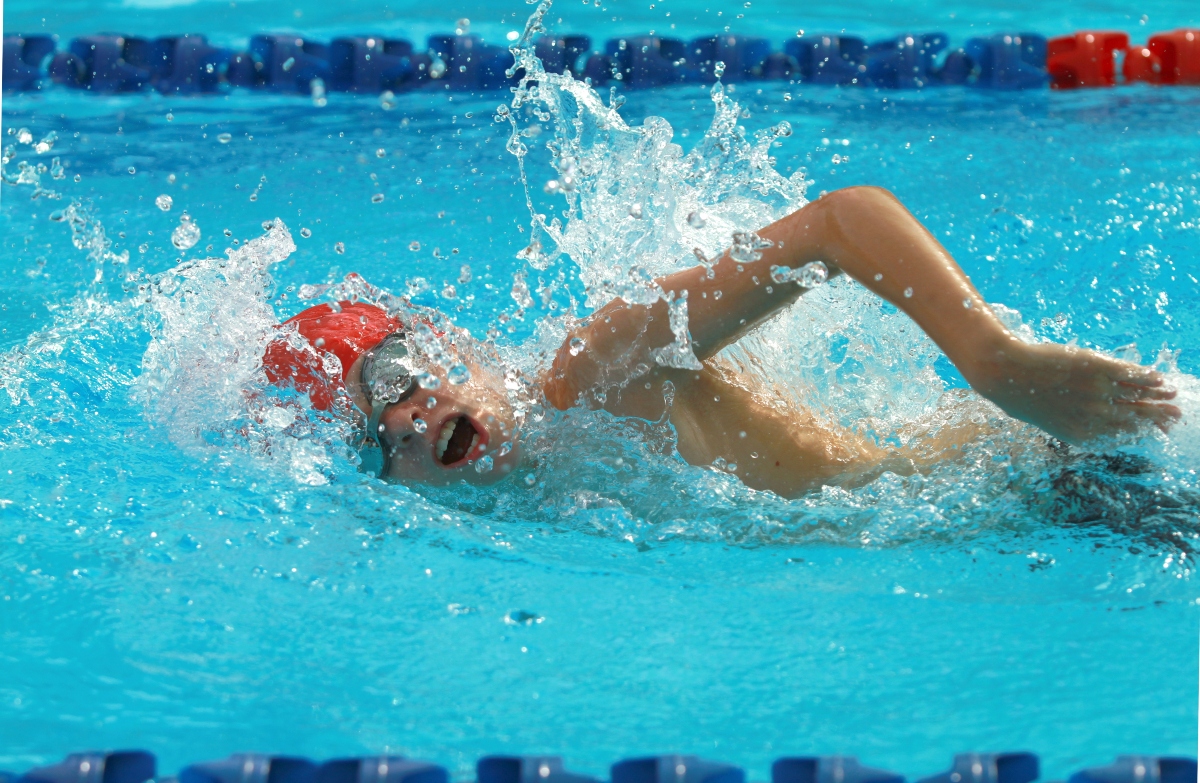
Intermediate swimming training is a complete physical activity, which allows you to develop the whole body in an organic way.
There are many benefits that you can get with a targeted swimming program, built on the basis of your level of preparation. This is why Tipsforwomens offers you intermediate swimming training with tables to help you get back in shape.
Intermediate swim training: what is it?
Tipsforwomens has already proposed a training program for beginners, now put yourself to the test with the intermediate program.
This intermediate swimming workout is made for people with some experience and adequate preparation, who no longer make mistakes in the pool.
Compared to the basic training, which develops over a distance of about 750 metres, in this program you will be asked to complete a number of laps which will lead you to swim for about 1400 metres, taking 45 minutes/one hour.
Be careful to modulate the effort on the basis of your physical condition: the advice is to proceed gradually, increasing your expenditure of energy as your training level increases.
To obtain results, you will have to swim three times a week, alternating between the two different programs that Tipsforwomens offers you.
Before starting intermediate swimming training, it is very important that you do stretching, which is essential for improving your performance and avoiding cramps and other unpleasant discomforts. It is also essential to cool down after training, to loosen up the muscles.
Attention: given that swimming is a demanding activity, especially for the cardio-respiratory system, we advise you to carry out a sports medical check-up to make sure you are fit to practice sport.
Intermediate swimming training: the different styles of the program
There are many swimming techniques that can be used. In our program we have planned 4:
- freestyle.
- Rana.
- Dorso .
- Double stroke back.
Freestyle (Crawl): The technique we all know, as well as the most effective in the water. It consists of an alternating movement of the arms, accompanied by a continuous propulsion of the lower limbs. The body should be horizontal to the water and face down towards the pool floor.
Rana: So called because it simulates the movement of the animal. It consists in moving the arms forward forming a kind of heart with the tip and at the same time moving the legs forming a circle.
Back: A technique that is performed lying on the back, the head facing upwards. The correct execution foresees the twisting of the torso, on both sides, at each stroke, accompanied by the propulsion of the lower limbs.
Double stroke back: Obviously very similar to the previous technique, from which it differs in the movement of the upper limbs. In this case it is not alternated, but requires the two arms to move together symmetrically.
Intermediate swim training: Training tables
2 – Program 1 for intermediate
| 8×25 m | Heating (style to taste) | |
| 4×25 m | Dorso | Rest 30” |
| 4×25 m | Freestyle | Rest 30” |
| 4×25 m | Dorso | Rest 30” |
| 4×25 m | Freestyle | Rest 30” |
| 2×25 m | Dorso | Rest 30” |
| 2×25 m | Freestyle | Rest 30” |
| 300 m | 50 m backstroke – 50 m breaststroke – 50 m freestyle – long and not fast movements | Rest 30” |
| 8×25 m | Freestyle legs with tablet | Rest 30” |
| 4×25 m | Double stroke backstroke | Rest 30″ |
| Cool down (4/6 tanks as desired trying to vary the styles. You can use fins or board or paddles) |
2 – Training program for intermediates: program 2
| 8×25 m | Heating (style to taste) | |
| 8×25 m | Freestyle | Rest 30” |
| 8×25 m | Dorso | Rest 30” |
| 8×25 m | Freestyle with pull buoy | Rest 30” |
| 4×25 m | Rana | Rest 15″ |
| 4×25 m | Rana | Rest 15″ |
| 4×25 m | Rana | Rest 15″ |
| 2×25 m | Freestyle | Rest 15″ |
| 2×25 m | Dorso | Rest 15″ |
| 2×25 m | Freestyle | Rest 15″ |
| 2×25 m | Dorso | Rest 15″ |
| Cool down (4/6 tanks as desired trying to vary the styles. You can use fins or board or paddles) |
Benefits of swimming
Thanks to swimming, you will be able to notice great improvements, physically and beyond. First of all, this sport is very useful for improving heart health and regulating blood pressure. Constant swimming, therefore, can reduce the risk of developing certain cardiovascular diseases.
Swimming also promotes circulation in the legs, which are remodeled and become firmer and more toned. Furthermore, the pressure of the water has a draining effect and gives the body an excellent massage against cellulite.
Obviously, like any physical activity, swimming helps keep your weight under control, by burning calories and speeding up your metabolism.
Furthermore, since it has no impact on the joints, it is also suitable for very overweight people. Not to mention the feeling of well-being you will experience after practicing it. Like any sport, it allows you to release stress and make you feel better physically and mentally.
Sometimes tiredness can be caused by an imperfect technique that does not make you economize the gesture to the detriment of your resistance, so I advise you to be followed by a swimming instructor who knows how to evaluate your executive technique during your freestyle and the back. It is by refining your technique that you will begin to improve your endurance.
If you are interested in the topic, discover all the benefits of swimming.
